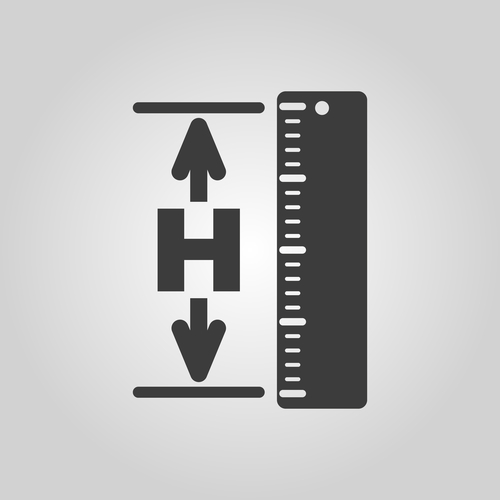Digital height gages can, with their long range of motion, be looked at as a sort of giant caliper. They do, however, possess a heightened level of accuracy because they are, as a benchtop gaging system, far more sophisticated. Reliably and quickly, a wide range of measuring tests can be performed by these extremely versatile gages. What’s more, they are easy to maintain, to use, and to set up.
A Closer Look at Digital Height Gages
What is contained within a digital height gage? Here you will find the control/evaluation display, the height measuring station, and the base plate. The measuring station is appropriate for coordinate measurements in one dimension in a vertical direction. It is primarily used, therefore, for determining distances and diameters between points on a test piece. However, if the test piece can be tilted by “90?, dimensional measurements are possible. Of course, the capability of calculating the “90? coordinates must be contained within the control/evaluation display for this to work.
The Measuring Area of a Height Gage
The size of the stylus and baseplate limit the height gage measuring area. Most height gages are used in the lower range of the most common 600 mm/24-inch range (lower range equaling 300 mm/12 inches). However, there are height gages that can measure up to 1000 mm/40 inches or more.
The base plate on which a height gage rests is important since it is part of the measuring circuit. Height gages should be used on a grade 1 granite base plate or grade 0. A vibration insulated stand should be used upon which to mount the granite plate. This assists in the elimination of vibrations. Vibrations can be a result of fork trucks driving by, machining centers, punching machines, and more.
Accurate, High Quality Measuring Results
The quality of a measuring instrument determines the quality of a measuring result. Also coming into play is the care with which the operator performs the measurement procedure. How can the quality of the measuring results be contributed to by the operator?
For starters, on a daily basis and prior to use, the height gage should be gone over carefully, and in the following manner (keep in mind that although, in most height gages, the probe diameter is stored in the memory, make it a practice to occasionally wipe off the contact probe and the table re-master on the probe diameter):
- Wipe off the contact probe and the table, and thoroughly clean the area surrounding the gage.
- Turn the gage on. Allow it to determine its “zero” reference location.
- For a minute or so, let the gage sit idle. To check for repeat, zero it again.
For approximately 80% of height gage applications, the above basics should be sufficient.
What Do We Measure?
Ordinarily, measuring heights is what electronic height gages are used for. However, in the world today, there are many things to measure. There are little grooves and widths, bolt circle patterns, center distances, diameters, and many more. Many part features are seemingly inaccessible yet do need to be addressed.
Thanks to new and improved instrument critiques and advances, numerous features have been built into the height gages used in current day. As an example, probes are used for many measuring applications. Fortunately, with today’s height gages, there is a probe for every occasion.
If you would like to know more about height gages, probes, and more (and what types are offered), contact the experts at Willrich Precision Instruments. We have a full line of height gages and other measuring devices used in the gaging and metrology industry.





